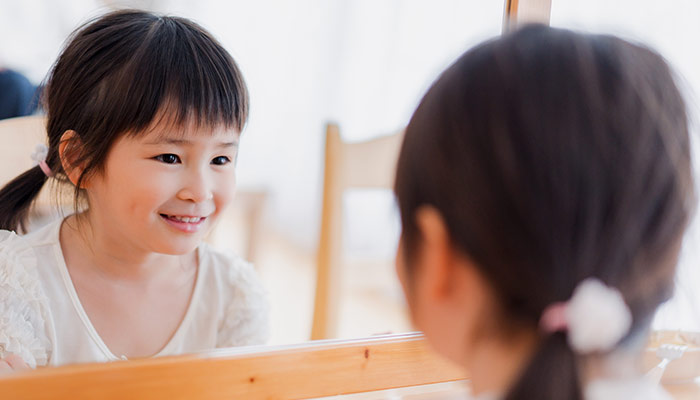While we believe that the books and resources recommended may be of value to you, keep in mind that these are suggestions only and you must do your own due diligence to determine whether the materials are appropriate and suitable for your use. PNC has no sponsorship or endorsement agreement with the authors or publishers of the materials listed.
ALL ABOUT ME

Trace Your Face
Children will trace their facial features on a mirror.

Lesson Objective
Children will name their facial features and recognize their uniqueness as they trace their faces on a mirror.
ScienceArt
What You'll Need
- 6”–8” Mirrors – 1 per child
- Repositionable contact paper – 1 roll (available inexpensively at office supply stores)
- Thin tip permanent markers – 1 per child
What To Do
Note: Before beginning the lesson, cover each mirror with clear contact paper. The children will be writing directly on the contact paper.
- Begin a discussion with the children about their faces (see Did You Know).
- Explain the term facial features (see Vocabulary) to the children and have them point to specific features as you discuss them.
- Demonstrate how they will be using a mirror to trace their reflections with a marker.
- Distribute mirrors and markers.
- Guide the children through tracing the outline of their faces and each facial feature. Encourage them to name each feature as they trace.
- Carefully remove the contact paper and display the self-portraits in the classroom.
Resources
Home School Resources
Home educators: use these printable lesson PDFs to teach this lesson to your home schoolers. They're available in English and Spanish.
Content Provided By
Common Core State Standards Initiative – These lessons are aligned with the Common Core State Standards ("CCSS"). The CCSS provide a consistent, clear understanding of the concepts and skills children are expected to learn and guide teachers to provide their students with opportunities to gain these important skills and foundational knowledge [1]. Visit the CCSS


